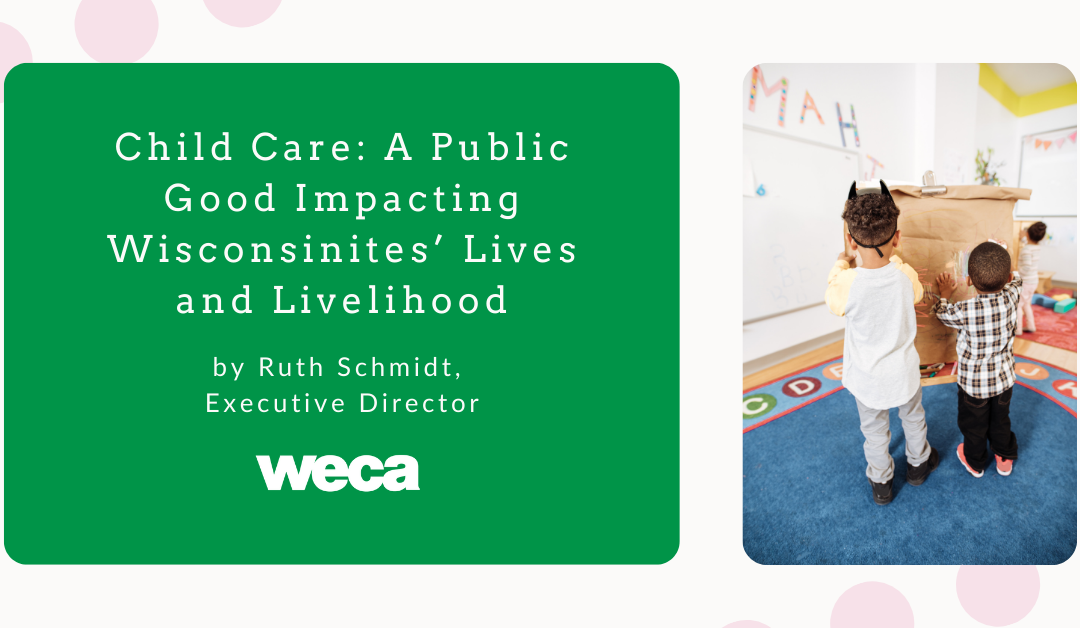Wisconsin’s child care system is broken. Residents from all corners of the state experience the challenges of this ailing infrastructure, which was fragile before the pandemic and has worsened significantly since. In light of this reality, Wisconsin Early Childhood Association offers some widely accepted truths.
An average family with children under age 5 spends one-fifth to one-third of their household income on care. Meanwhile, there is an enormous child care supply shortage. About 50 percent of Wisconsin, and 70 percent of rural areas, are child care “deserts,” where there is one regulated slot for every three children under age 5.
Early childhood professionals remain dedicated to the education and care of young children while earning poverty-level wages averaging $11 to $13 an hour with rare access to benefits. Programs operate on razor-thin margins with budgets balanced on parent fees, which do not cover the full cost of care. The result is a blatantly broken business model. These collective challenges create an economic ripple effect of workforce implications.
Even more startling than the data and statistics are first-hand stories we hear all-too regularly:
Parents and caregivers, desperate, and many times in tears, attempting to bribe providers to get their children into child care so they can work.
Working women saying they are leaving their jobs and the workforce entirely due to economic or logistical necessity connected to child care challenges.
Early childhood professionals leaving programs or even the field due to poor compensation, a lack of resources, and burnout.
Companies offering a variety of shifts in a valiant effort to be flexible and retain employees with young children.
Can we agree families pay too much and there isn’t enough care for those who need it? Can we agree early childhood workforce compensation is grossly inadequate and that the business model is unsustainable? Can we agree our child care infrastructure has statewide workforce ramifications?
If the answers are yes, you recognize we cannot afford to continue viewing child care as a free market commodity and that child care is early education and healthy development. The child care workforce is comprised of skilled educators who prepare children for success in K-12 education and the rest of their lives. Child care is workforce development allowing families to work and contribute to business productivity and a healthy economy. Child care is a public good, too important to let struggle and decline.
Since 2020, Wisconsin has received more than $800 million in federal child care pandemic relief funding, which has supported staffing and operations and allowed many programs to stay open and care for children while their parents work. Additional federal funding through the American Rescue Plan Act was distributed to counties and local municipalities, some of which have prioritized child care in their spending.
In 2024, we reach a fiscal cliff when this relief funding expires. Without state investment, the loss of revenue will damage an already fragile system. Wisconsin historically invests the minimum state revenue to leverage its federal child care block grant at just more than $16 million. With nearly 320,000 children under age 5, can Wisconsin do better than a $50 per child investment?
We need county officials and local leaders to share stories of their communities’ child care challenges with policymakers and call for significant state investment. We have seen leaders across Wisconsin establish task forces, councils and committees to understand local child care challenges. We have seen a variety of innovative, community-level solutions develop in partnership with early childhood leaders. While that work is absolutely necessary, now we urgently need a commitment to also advocate for a substantial state investment. Investments will create a Wisconsin where families access affordable high-quality care so they can work and young children can thrive.
Join WECA and its new advocacy initiative, Raising Wisconsin, on this journey to reframe how we view child care access and affordability, child care workforce compensation and the health and well-being of our youngest children and their families. Advocacy for public investment has never been more important than right now.
We have an incredible opportunity to make investments into child care that influence every aspect of life and livelihood in Wisconsin. Let’s work together to make a real, lasting impact.
_____________________________________________________________________________________
This column was printed in the September 2022 edition of Wisconsin Counties Association’s magazine, Wisconsin Counties. Read more in this workforce-focused edition online at this link.

